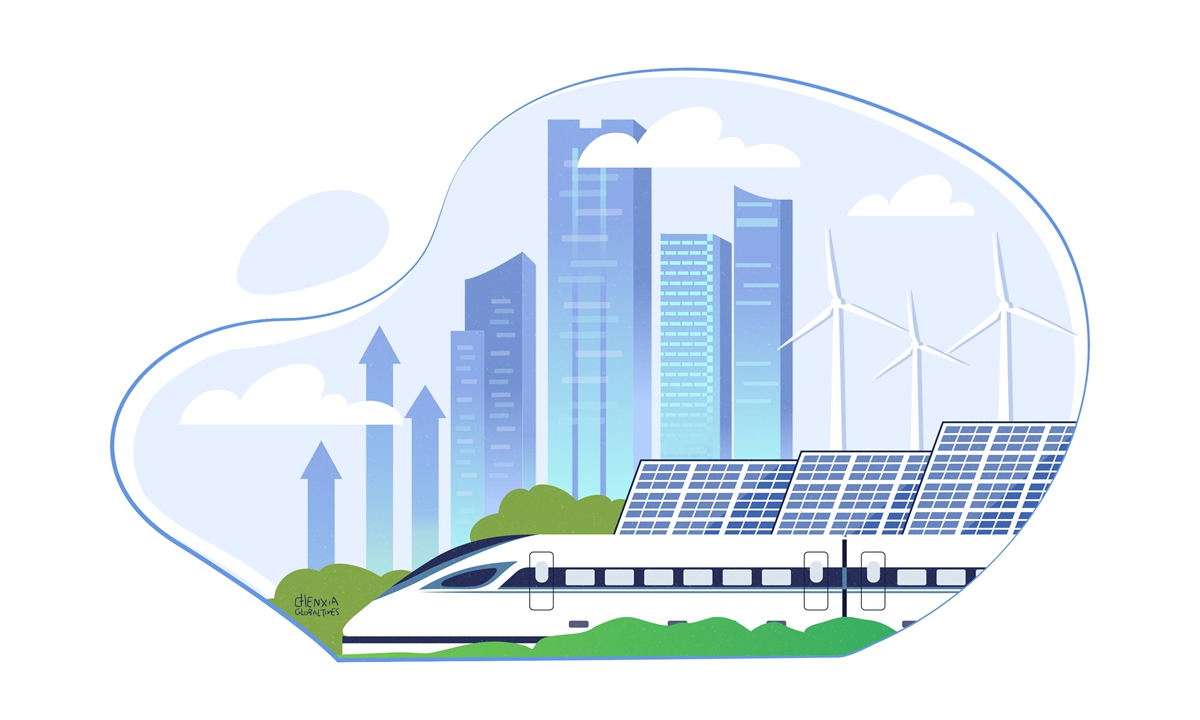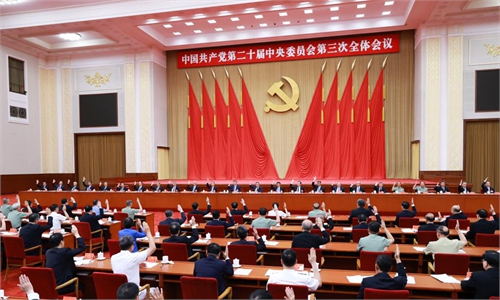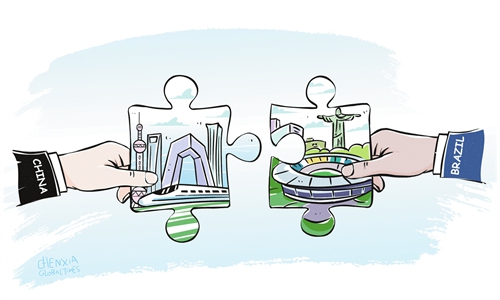
Illustration: Chen Xia/GT
The third plenary session of the 20th Communist Party of China (CPC) Central Committee, held in July, is of historical importance. During the session, the 20th CPC Central Committee adopted a resolution to further deepen reforms and advance Chinese modernization.The 20th Central Committee of the CPC concluded its third plenary session by issuing a communique. In promoting high-quality development, the communique urged deepening supply-side structural reform, improving incentive and constraint mechanisms for promoting high-quality development, and creating new drivers and strengths for realizing growth, according to the Xinhua News Agency.
"We will improve the institutions and mechanisms for fostering new quality productive forces in line with local conditions, for promoting full integration between the real economy and the digital economy, for developing the services sector, for modernizing infrastructure, and for enhancing the resilience and security of industrial and supply chains," it stated.
China's all-out efforts to prioritize research and innovation and technology self-sufficiency in the past decade have already reaped fruitful results, as the country is now a pacesetter in many advanced technologies, which has helped lay the bedrock for across-the-board advances in manufacturing, trade, living standards and more.
For example, at present, China is undisputedly the global leader in green technology research and innovation, having produced a wide variety of high-end batteries, solar photovoltaic panels, wind turbines, and electric vehicles - all sectors with strong market potential worldwide.
The Earth urgently needs a significant reduction in greenhouse gas emissions, and green new-energy products have a vast market in nearly every country worldwide. Cutting carbon emissions and mitigating climate change is mandatory for the world. The inflammatory rhetoric in the West of "Chinese new-energy overcapacity" is ill intended and despicable.
Facing rising geopolitical uncertainty, tens of thousands of Chinese scientists and engineers have been exploring one technology domain after another. In many high-tech areas, such as high-end semiconductors, the country is striving to enhance its domestic capability.
To overcome external coercion and suppression, China has taken the courageous resolve to pursue technology independence or what can be called self-reliance. The events since 2018, beginning with the US-launched tariff war against China, have taught China a clear lesson: High technology cannot be begged for or bought from the West. The Chinese people must rely on themselves.
From building the world's most advanced high-speed railway system and subsequently building the world's longest high-speed rail lines which crisscross the whole nation to owning the world's largest 5G network that powers e-commerce, instant e-payment and a range of other applications, sophisticated drone manufacturing capability, and green new-energy products, the new quality productive forces are truly mind-boggling as well as epoch-making.
China, in the coming months and years, should be steadfast in investing its resources to develop new quality productive forces by exploring new technologies and new business models. Any slackening or slowdown in innovation - on artificial intelligence, high-end robotics, new materials, new medicines and more - will have profoundly negative implications for China and other developing nations.
China consistently opposes de-globalization, isolationism, and protectionism, as these paths inevitably lead to intellectual stagnation and economic decline. For the world, China's deepening reform and expanding opening-up will create greater opportunities amid a global economic downturn and rising economic protectionism.
It is of great significance for China to always emphasize long-term economic planning, while seeking well-coordinated development of all industrial lines and service segments. To seek sustainable economic growth in a massive country like China, it is imperative to step up integrated, synergic and balanced development, taking into holistic consideration of all major drivers of economic growth, and giving sufficient resources and policy support to fuel up the growth engines.
China's economy remains notably resilient, especially in comparison to other countries with similar growth trajectories throughout history. Provided the country keeps strongly committed to its state policy of reform and opening-up, sticks to technology innovation and manufacturing upgrade, and always seeks coordinated, synergic, and balanced development, China's path to modernization is safe and assured.
The author is an editor with the Global Times. bizopinion@globaltimes.com.cn



